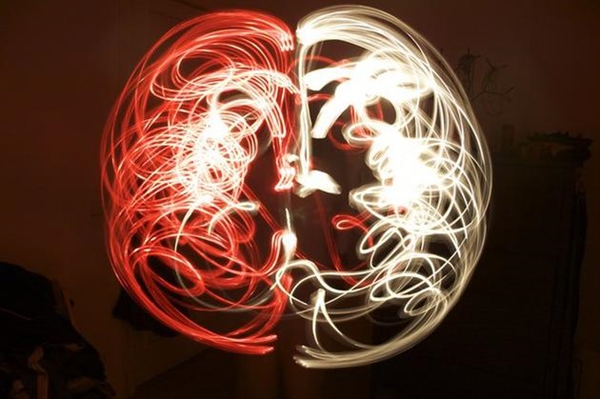This phenomenon occurs when the brain is dying
At the boundary between life and death, there is a phenomenon called "diffusion suppression wave".

Scientists first discovered this phenomenon in rabbits. Harvard University biologist Aristide Leo described in a series of papers published in the 1940s that he injured the brains of unconscious experimental animals by electric shock, glass rod puncture, or cutting off the supply of arterial blood flow. After that, the brain activity of the corresponding brain area suddenly fell silent. Within five minutes of the injury, the phenomenon first appeared in the damaged area and spread to the brain area further away, so he called this phenomenon "diffusion inhibition."
After a few decades, on February 15 this year, a paper published in the Neurological Annual Report described the phenomenon of this phenomenon in the brain cells of sudden death.
To collect data, researchers set up research sites in hospitals in Berlin and Cincinnati, USA. After obtaining the consent of the deceased's close relatives and other legal representatives, they reported the neural activity of the last few minutes of life in the nine brain-implanted patients. Invasive neurological monitoring is required for these patients, so when the doctor terminates their life support system, the required electrodes are already in place.
Some of these patients experienced severe brain damage, such as a 47-year-old male who was hit by a train while driving; and a 57-year-old male who fell off the stairs while others suffered from heart disease, stroke and other diseases. So before the electrodes are implanted, they may have experienced the first "diffusion suppression". The paper describes the last suppression that occurred before their death.
When the body dies, the brain cells will splatter the charged ions
Like other organs, the brain is made up of flesh and blood, mainly composed of nerve cells. Nerve cells need to rely on fine chemical balance to function properly. For the first time, the new paper published in this paper deeply studies the manifestation of the chemical reaction process discovered by Leo in the rabbit brain in the human brain. The results show that the process is very similar before the body is about to die completely.
The nerve cells are filled with charged ions, creating a potential difference between themselves and the surrounding environment, which in turn produces a weak electrical signal. The author writes in the paper that to maintain this potential difference, it is necessary to make constant efforts to offset the electromagnetic force that wants to eliminate the potential difference.
To this end, these hardworking cells need to constantly extract oxygen and chemical energy from the blood. As the body dies, the blood supply to the brain stops, and the hypoxic nerve cells need to accumulate the remaining resources as much as possible. When the fire of life is about to dry up, sending nerve signals around is undoubtedly a great waste of these precious resources. Therefore, the nerve cells will "settlement" as much as possible, use the remaining energy to maintain the internal charge, and wait in vain for the blood supply to return to normal.
The researchers responsible for observing the electrodes found that the first wave of inhibition did not appear to spread out, but rather occurred everywhere, as if the neurons of the entire brain responded to the dryness of the blood at the same time. After a few minutes, the final, outward-diffusion suppression wave is late, as if the chemical reserve of the cell was finally exhausted and the ions in the cell penetrated into the surrounding tissue.
For a dying patient, this marks the last moment before the brain function is terminated. But they also pointed out that this is not the same as true death. Previous animal studies have shown that if blood and oxygen supply are quickly restored after a diffuse wave, nerve cells can “resurrect and resurrect†and restore chemical potential. Only after a few minutes of the spread wave will the nerve cells actually reach a certain "end point" and there will be no turning back.
Colored adhesive bandage
Wenzhou Celecare Medical Instruments Co.,Ltd , https://www.wzcelecare.com
